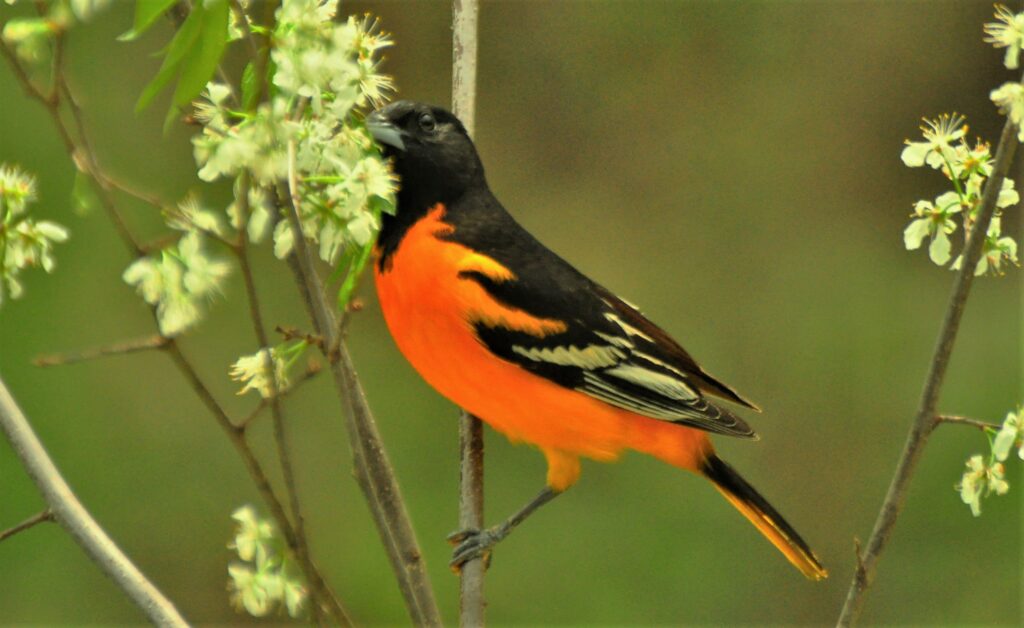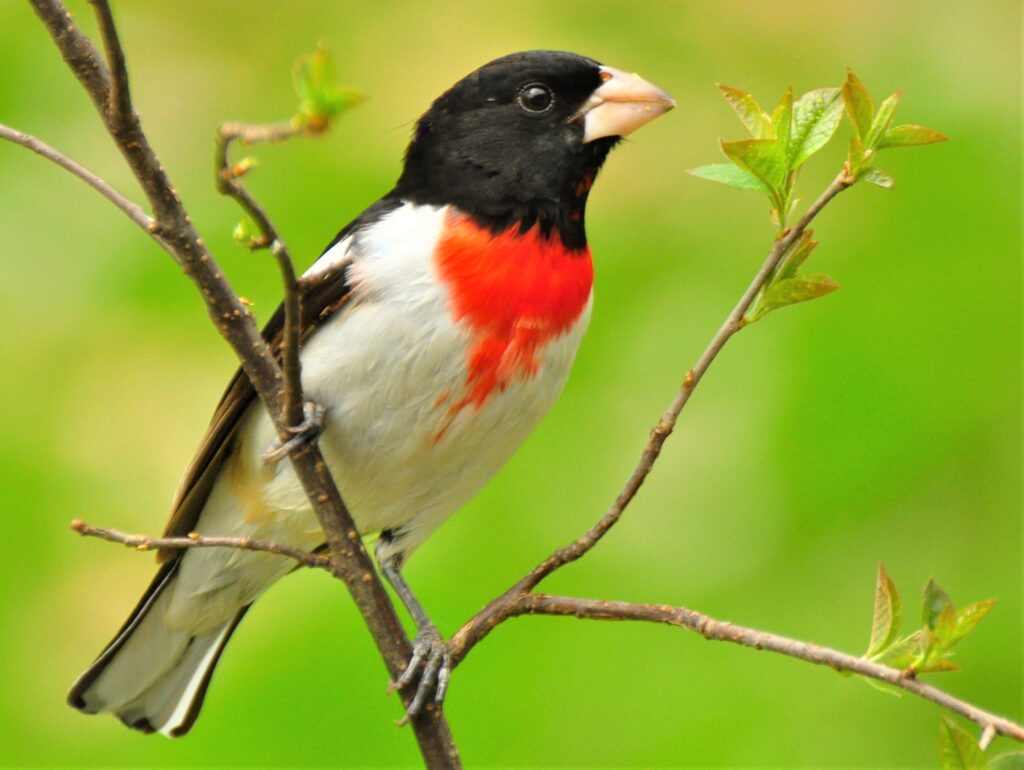Photography courtesy of Lowell Washburn, all rights reserved.
The latter half of May is a time that no Iowa birding enthusiast would willingly choose to miss. The annual spring migration is moving forward at full throttle and bird numbers are approaching their peak.
After spending the winter months in the sun-drenched habitats of the Caribbean, Central America and South America, millions of neotropical songbirds are now winging their way toward northern nesting grounds. For many species, the flight between winter and summer homes involves a rigorous journey traversing thousands of miles of trackless sky. Hidden from human eyes, the migration miracle occurs in inky darkness as flocks employ starry constellations, magnetic fields and other, certainly more mysterious, factors to successfully navigate the empty vastness of the night sky. But at the approach of dawn, wing weary travelers descend to earth to replenish spent reserves. Thousands of those travelers are currently appearing at local woodlands, providing area birders with a fleeting view of their colorful splendor.

The diversity of spring birdlife is astounding. Dozens of species have already arrived; many more are on their way. Some observations come easy. Comparatively large or brilliantly colored birds such as orioles, tanagers, buntings or grosbeaks are hard to miss. Others – including more than 30 species of migrating wood warblers – provide greater viewing challenges. When it comes to these tiny travelers, a sudden movement in the leafy understory and a quick flash of color may be the only glimpse you’ll get.
Timing: For many migrants, the spring migration will lead to the remote pine forests of northern Minnesota, central Canada, or beyond. Some birds will even travel to the dwarf shrub habitats of the subarctic. For many species, Iowa is but the half-way point to ancestral summer breeding grounds. Northern summers are brief and from a nesting bird’s point of view, there is little reason to linger. For those who wish to view these amazing voyagers, getting into the out-of-doors is something that cannot be delayed. To make the most of this year’s viewing opportunities, birders need to strike while the metal is hot. The birds you missed seeing today could already be hundreds of miles to the north by tomorrow’s sunrise.

Location: Although every isolated gooseberry patch and plum thicket is likely to harbor its own feathered treasure, larger [public access] habitats — such as state and county wildlife areas, state parks, and other public trusts — generally yield greater numbers and greater varieties of birdlife. Choice habitats are those offering a rich mix of hardwood timber, dense understory, and a liberal sprinkling of temporary wetlands. If you’re looking for birding diversity, it just doesn’t get any better than that.

Most of us have favorite state or county “go to” areas located close to home. Those are the places where we do the majority of our birding. But If you’re ever in the mood for a road trip, Iowa offers plenty of places to explore. A visit to southern Iowa’s Stephens State Forest, northeast Iowa’s Yellow River State Forest, or the rugged Mississippi River blufflands of eastern Iowa are well worth the drive. In addition to top drawer mushroom hunting and magnificent scenery, these densely forested landscapes also harbor the crème de le crème of Iowa’s spring birding.

 Tom Cope
Tom Cope Sue Wilkinson
Sue Wilkinson Susan Judkins Josten
Susan Judkins Josten Rudi Roeslein
Rudi Roeslein Elyssa McFarland
Elyssa McFarland Mark Langgin
Mark Langgin Adam Janke
Adam Janke Joe Henry
Joe Henry Kristin Ashenbrenner
Kristin Ashenbrenner Joe Wilkinson
Joe Wilkinson Dr. Tammy Mildenstein
Dr. Tammy Mildenstein Sean McMahon
Sean McMahon